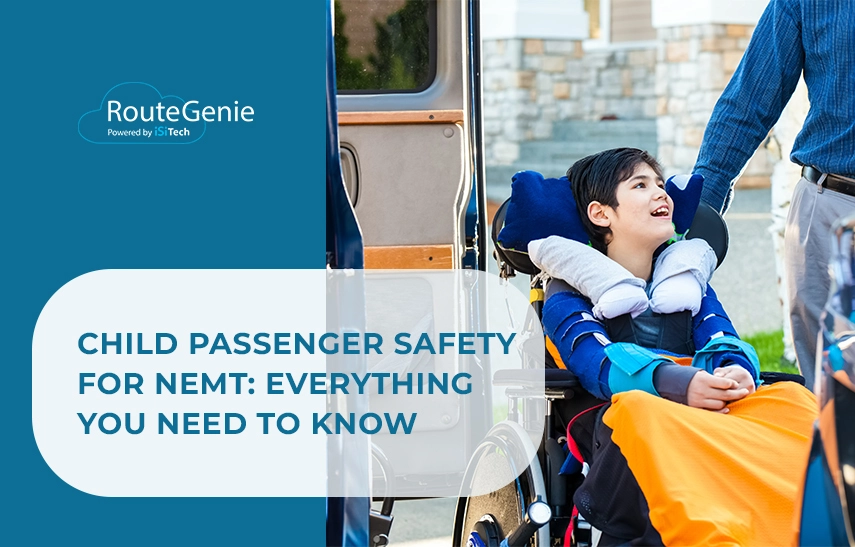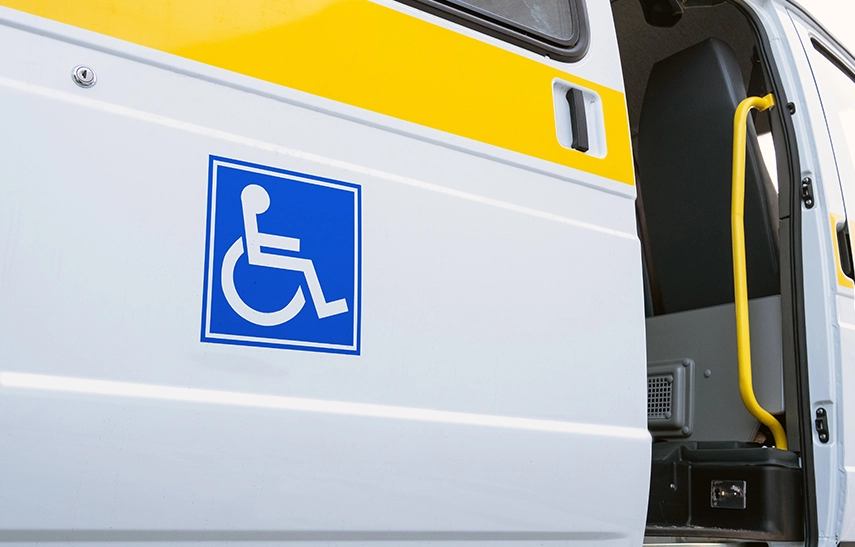Child Passenger Safety for NEMT: Everything You Need to Know

Non-emergency medical transportation (NEMT) is for everybody. However, some NEMT companies and operators may only consider adults their target demographic and take child safety measures for granted.
Child passenger safety is critical, whether the child is a patient in need of transport to their appointment or a child being brought along for a trip because they cannot be left behind at home.
In this article, let’s discuss the essential elements of child passenger safety in NEMT vehicles and overall operations.
Contents:
- Exploring Child Passenger Safety in NEMT Operations
- Essential NHTSA and AAP Guidelines for Child Transportation in NEMT
- NEMT providers’ responsibility for child safety seat compliance
- Other NEMT Services for Children
- Conclusion
Exploring Child Passenger Safety in NEMT Operations
NEMT is necessary for people with disabilities or chronic illnesses. This includes children who may need frequent visits to their physicians to treat their health issues or to help them adjust to their conditions.
It is much safer for children to use NEMT rather than go on public transport.
However, are NEMT vehicles equipped to ferry children?
Most NEMT providers focus on adults who call for their services. There are various vehicles for them, such as standard ambulatory transportation and those that can accommodate wheelchairs and stretchers. However, these companies must also be more inclusive and provide equipment and amenities that cater to children.
According to the Insurance Institute for Highway Safety, 715 children were killed in motor vehicle crashes in the U.S. in 2021. More than a third of them were not buckled in their seats.
NEMT vehicles that ferry children must have the proper restraints and car seats for their smaller statures. This is why the proper authorities have instituted NEMT Child Safety Guidelines.
Essential NHTSA and AAP Guidelines for Child Transportation in NEMT
The American Academy of Pediatrics (AAP) and the National Highway Traffic Safety Administration (NHTSA) have set child safety seat NEMT requirements when such vehicles are transporting children. The AAP recommends the appropriate car seat for children of certain ages, while the NHTSA focuses more on the child-safety features for vehicles.
What are these AAP and NHTSA recommendations?
NHTSA recommendations
The traffic administration states that vehicles that ferry children must have side-impact airbags to minimize injury in the event of a collision. Child safety locks should also be installed so that children won’t be able to open vehicle doors accidentally.
Another vital child passenger safety measure is anti-pinch or auto-reverse windows, which prevent children from accidentally pressing the button and closing it on their fingers. Further, seatbelts must be able to secure child safety seats.
AAP recommendations
The AAP's recommendations center on car seat usage. Infants and toddlers (two years old and younger) must be in rear-facing child safety seats.
Children two years old and older and toddlers who have outgrown a rear-facing child seat can start using a forward-facing seat with a harness when they reach a certain weight and height.
Older children (8 to 12 years old) can sit in a booster seat. When a child reaches a certain height, and the seatbelt fits them perfectly, then they can stop using the booster seat.
State recommendations
NEMT operations are regulated by the state. Therefore, in addition to adhering to the NHTSA and AAP recommendations, it is prudent to check with local authorities about their position on NEMT vehicles carrying children.
NEMT providers’ responsibility for child safety seat compliance
 It is the responsibility of every NEMT company to ensure that it complies with child safety seat NEMT requirements. Furthermore, part of an NEMT company’s eligibility requirements when hiring employees must include specific training or experience in ferrying children and adults with children.
It is the responsibility of every NEMT company to ensure that it complies with child safety seat NEMT requirements. Furthermore, part of an NEMT company’s eligibility requirements when hiring employees must include specific training or experience in ferrying children and adults with children.
NEMT providers must not deny a child or anyone else their service. This means companies must have child safety and booster seats available when clients request them.
Drivers must also know how to attach these seats. Knowing how to talk and entertain children is the icing on the cake.
How Technology Can Help NEMT Companies
Leveraging technology is crucial for NEMT companies when providing child passenger safety. For example, RouteGenie is a great way to ensure children who need NEMT services are given the right vehicle for their trip.
RouteGenie is NEMT software that simplifies trip scheduling, billing, routing, and dispatching. Based on passenger and patient records, the system will send the appropriate vehicle with child passenger safety features for the trip. Plus, you can choose the right driver, someone who knows how to deal with children.
NEMT software automates the otherwise complex process of non-emergency medical transportation, allowing transportation providers to work with greater efficiency. It can be customized to accommodate the imminent needs of the provider.
RouteGenie also has fleet management features, with detailed records and schedules of necessary maintenance activities for each NEMT vehicle. This helps ensure that every vehicle in the fleet is in great condition to be on the road.
These features help ensure the safety and security of children onboard the NEMT.
Other NEMT Services for Children
 NEMT services aren’t just for children who need to visit healthcare providers. NEMT can also be used for student transportation. It is ideal for immunocompromised children who cannot be on a regular school bus.
NEMT services aren’t just for children who need to visit healthcare providers. NEMT can also be used for student transportation. It is ideal for immunocompromised children who cannot be on a regular school bus.
Children with developmental issues may be subject to teasing and bullying on traditional buses with a large student population.
Special education students are also better off in SPED transportation rather than regular mass transit vehicles or regular school buses. With software for SPED transportation, NEMT providers can also cater to these students as they already have suitable vehicles, technology for efficient trips, and well-trained drivers.
Conclusion
Safety is critical for all NEMT passengers. Children have different needs than adults, and safety features within NEMT vehicles must account for their curiosity and propensity for pushing buttons and playing around.
Vehicles with child passenger safety features are a must to serve children, whether they are on their way to their medical appointments or even to school.
About the author

As RouteGenie's Marketing Director, Yurii gained deep knowledge in the NEMT industry. He is an expert in marketing, utilizing all marketing channels to build RouteGenie's brand and to make sure NEMT providers have access to powerful NEMT software that can boost their growth. Yurii shares his knowledge by writing content on topics related to marketing, and the healthcare industry: medical transportation, home care, and medical billing.
The author assumes no responsibility or liability for any errors or omissions in the content of this site. The information contained in this site is provided on an "as is" basis with no guarantees of completeness, accuracy, usefulness or timeliness.